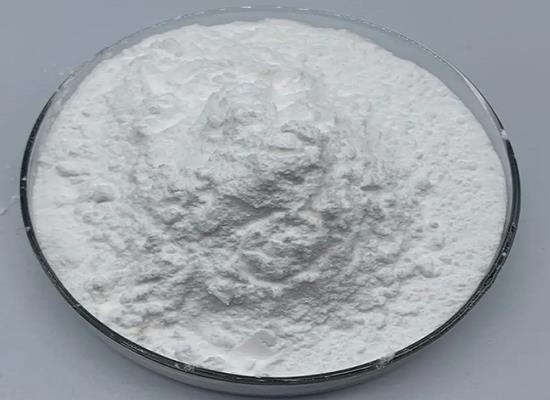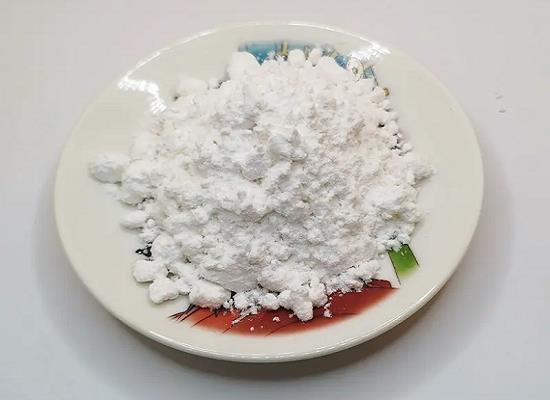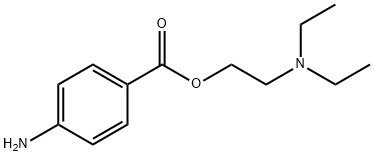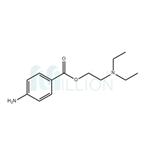Procaine: pharmacokinetics and clinical applications
Aug 9,2023
General Description
Procaine is a local anesthetic widely used in pain management, dental procedures, and minor surgeries. It blocks nerve impulse transmission by inhibiting sodium ion flux. However, its use is limited due to potential risks of systemic toxicity and allergic reactions. In geriatric syndromes, procaine acts as an antioxidant, reducing oxidative stress and cellular damage. It inhibits reactive oxygen species (ROS) generation and lipid peroxidation while modulating antioxidant enzyme activity. Procaine's primary metabolites, DEAE and PABA, contribute to its pharmacological effects. Ongoing research explores the therapeutic benefits of procaine and other antioxidants in age-related diseases.

Figure 1. Injection of procaine
Pharmacokinetics
Procaine exhibits pharmacokinetic characteristics such as limited distribution and tissue uptake, as well as a short duration of action. When administered through continuous intravenous infusion, the steady-state plasma level is reached within 20 to 30 minutes. After discontinuation of administration, the drug concentration in the body decreases rapidly. The distribution half-life (t1/2 alpha) is approximately 2.49 ± 0.36 minutes, while the elimination half-life (t1/2 beta) is approximately 7.69 ± 0.99 minutes. Procaine undergoes hydrolysis in the body, primarily by the enzyme pseudocholinesterase, resulting in the formation of diethyl-amino-ethanol (DEAE) and para-aminobenzoic acid (PABA), which are considered its primary metabolites. Hydrolysis can also occur in different organs through microsomal carboxylesterases. DEAE displays local anesthetic activity, suggesting additional pharmacological actions beyond procaine itself. Studies have shown that orally-administered procaine hydrochloride can influence intermediary metabolism, enhancing the ratio of acetyl coenzyme A to coenzyme A in the liver and cerebellum. Procaine hydrochloride and DEAE also increase the hepatic incorporation rate of amino acids in protein, potentially indicating their involvement in essential biomolecule synthesis. A hypothesized second stage of procaine metabolism involves the generation of ethanolamine from DEAE. Ethanolamine can serve as a precursor in the biosynthesis of membrane phospholipids, including acetylcholine, a neurotransmitter. 1
Clinical applications
Local anesthetic
Procaine has extensive clinical applications as a local anesthetic. It exerts its effect by blocking the transmission of nerve impulses through the inhibition of sodium ion flux across neuronal membranes. The main application of procaine is in pain management, including dental procedures, minor surgeries, and diagnostic tests. It demonstrates a rapid onset of action and can provide varying degrees of pain relief, ranging from moderate to complete. Moreover, procaine is utilized as a sympatholytic agent, primarily in the treatment of complex regional pain syndrome. This condition involves abnormal pain signaling, and by acting as a sympatholytic, procaine can help alleviate symptoms. However, the use of procaine is limited due to potential adverse effects. These include the risk of intravascular injection, which can lead to systemic toxicity, as well as the rare occurrence of anaphylaxis, a severe allergic reaction. Furthermore, procaine may also cause heart arrhythmias, highlighting the need for careful monitoring and administration during its use. 2
Geriatric syndromes
The clinical application of procaine in geriatric syndromes involves its role as an antioxidant. Oxidative stress, caused by an imbalance between reactive oxygen species (ROS) production and the biological system's ability to counteract them, leads to damage in various cellular structures. This includes cell membranes, lipids, proteins, and DNA. Multiple sources, such as xanthine oxidase and NADPH oxidase, contribute to ROS generation. Environmental factors like radiation and exposure to xenobiotics can also enhance ROS production. Given that many age-related diseases and geriatric syndromes are associated with oxidative stress and cellular damage, limiting oxidative stress has become a major focus in aging-related pharmaceutical research. Antioxidants have emerged as a promising strategy for disease prevention and geroprotective therapies. Studies involving procaine and GH3 have demonstrated their antioxidant effects in vitro and in vivo. They inhibit ROS generation and lipid peroxidation while modulating the activity of antioxidant enzymes and nonenzymatic antioxidants. Efforts continue to explore the therapeutic benefits of procaine and other natural antioxidant compounds or drugs in alleviating oxidative stress under biologically relevant conditions. 3
Reference
1. Gradinaru D, Ungurianu A, Margina D, Moreno-Villanueva M, Bürkle A. Procaine-The Controversial Geroprotector Candidate: New Insights Regarding Its Molecular and Cellular Effects. Oxid Med Cell Longev, 2021, 2021:3617042.
2. Waldinger R, Weinberg G, Gitman M. Local Anesthetic Toxicity in the Geriatric Population. Drugs Aging, 2020, 37(1):1-9.
3. Kregel KC, Zhang HJ. An integrated view of oxidative stress in aging: basic mechanisms, functional effects, and pathological considerations. Am J Physiol Regul Integr Comp Physiol, 2007, 292(1):R18-36.
- Related articles
- Related Qustion
- Procaine: a general anesthesia drug Jan 2, 2024
Procaine, a inhibits nerve impulses. Explored as a general anesthetic, its synthesis yields derivatives with improved efficacy and safety considerations.
- What is Procaine? Sep 17, 2021
Procaine is a chemical. People use it for medicine. Be careful not to confuse the procaine used by mouth with the prescription procaine given by injection only under the supervision of a healthcare professional.
Tetracaine patch blocks nerve impulses, providing effective anesthesia with mild side effects. Follow guidelines carefully.....
Aug 9,2023APIEthyl (2,4,6-trimethylbenzoyl) phenylphosphinate is used in shape-memory polymers and 3D printing. Low toxicity, avoid skin/eye contact for safety.....
Aug 10,2023API








